
The Humber is a large tidal estuary on the east coast of Northern England. It is formed at Trent Falls, Faxfleet, by the confluence of the tidal rivers Ouse and Trent. From there to the North Sea, it forms part of the boundary between the East Riding of Yorkshire on the north bank and North Lincolnshire on the south bank. Although the Humber is an estuary from the point at which it is formed, many maps show it as the River Humber.

Barton-upon-Humber or Barton is a town and civil parish in North Lincolnshire, England. The population at the 2011 census was 11,066. It is situated on the south bank of the Humber Estuary at the southern end of the Humber Bridge. It is 6 miles (10 km) south-west of Kingston upon Hull and 31 miles (50 km) north north-east of the county town of Lincoln. Other nearby towns include Scunthorpe to the south-west and Grimsby to the south-east.

Immingham is a town, civil parish and ward in the North East Lincolnshire unitary authority of England. It is situated on the south-west bank of the Humber Estuary, and is 6 miles (10 km) north-west from Grimsby.
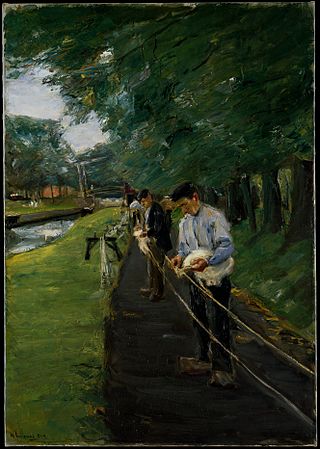
A ropewalk is a long straight narrow lane, or a covered pathway, where long strands of material are laid before being twisted into rope. Due to the length of some ropewalks, workers may use bicycles to get from one end to the other.
Barton Waterside is a village in North Lincolnshire, England. It is in the civil parish of Barton-upon-Humber. Barton Waterside consists of the former port area at the north end of Barton-upon-Humber. The Community is centred on Barton Haven - a late Anglo-Saxon artificial harbour - which was dug c.1000 AD to create a reliable deep water port for the extreme north of Lindsey. It seems possible that the project was initiated by Peterborough Abbey which had interests in the parish at that time.

St Peter's Church is the former parish church of Barton-upon-Humber in North Lincolnshire, England. It is one of the best known Anglo-Saxon buildings, in part due to its role in Thomas Rickman's identification of the style. It has been subject to major excavations. The former Church of England church is now run by English Heritage and houses an exhibition exploring its history.

Saxby All Saints is a village and civil parish in North Lincolnshire, England. The population of the civil parish at the 2011 census was 385. It is 6 miles (9.7 km) north of Brigg and 4 miles (6.4 km) south-west of Barton upon Humber.

Horkstow is a village and civil parish in North Lincolnshire, England, 4 miles (6.4 km) south-west from Barton-upon-Humber, 1 mile (1.6 km) south from South Ferriby and 9 miles (14.5 km) north from Brigg. It lies on the B1204, and 1 mile (1.6 km) east from the navigable River Ancholme. It is one of the five "Low Villages" – Worlaby, Bonby, Saxby All Saints, Horkstow and South Ferriby – between Brigg and the River Humber, so-called because of their position below the northern edge of the Lincolnshire Wolds. Horkstow was previously part of Glanford administrative district, and before that, the North Lindsey division of Lindsey, Lincolnshire.
A ropewalk is a long straight narrow lane, or a covered pathway, where long strands of material are laid before being twisted into rope.

The Barton-upon-Humber Assembly Rooms is a Grade II listed building in Barton-upon-Humber, North Lincolnshire, opened in 1843 as a Temperance Hall.
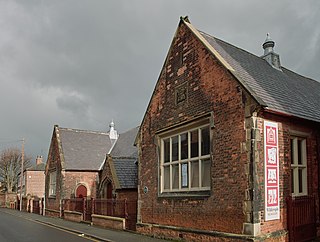
The Wilderspin National School is a former national school and Grade II listed building in Barton-upon-Humber, North Lincolnshire, and a museum focussing on the life and works of Samuel Wilderspin.
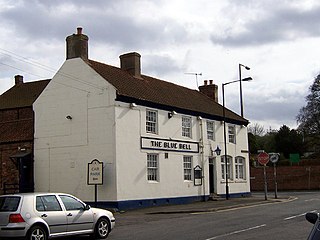
The Blue Bell is a grade II listed building and former public house in Barton-upon-Humber, North Lincolnshire, England.
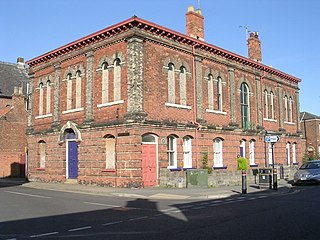
The former Oddfellows' Hall in Barton-upon-Humber is a Grade II Listed building constructed in 1864 by the Barton Lodge of the Odd Fellows Society. As well as an Oddfellows' Hall it has operated as a cinema, dance hall, roller skating rink, offices, library, and private accommodation.

51 Fleetgate in Barton-upon-Humber is a Grade II* Listed building with parts dating back to the 14th century. It is considered to be the oldest surviving residential building in North Lincolnshire.
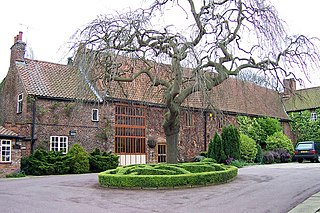
Tyrwhitt Hall is a late medieval residence and a Grade II* Listed building in Barton-upon-Humber, North Lincolnshire.
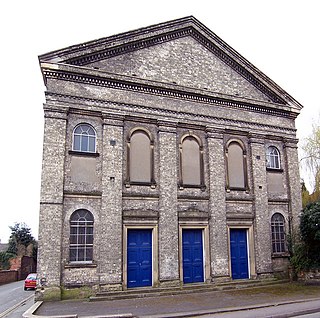
Trinity Methodist Church is a mid 19th-century Methodist church and a Grade II Listed building in Barton-upon-Humber, North Lincolnshire, England.
Wendy Witter is a public servant and charity worker from Barton-upon-Humber, North Lincolnshire, England.

The Salvation Army Citadel is a Grade II Listed building in Barton-upon-Humber, North Lincolnshire, England. It was founded in 1867 by Joseph Wright as a Primitive Methodist Chapel. It is immediately adjacent to the Wilderspin National School.

The Former Police Station, Barton-upon-Humber is a Grade II Listed building in Barton-upon-Humber, North Lincolnshire, England.
Philip Pape (1910-1982) was a British sculptor and stonemason.

















